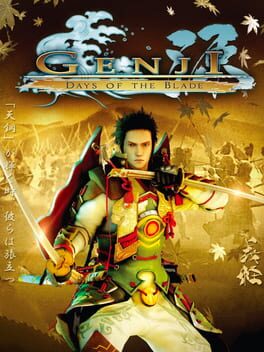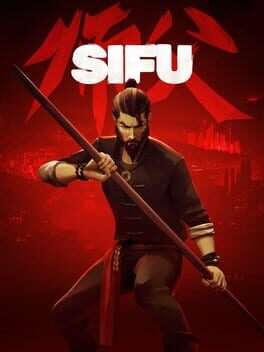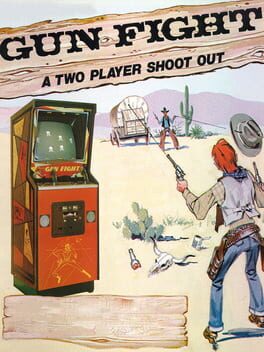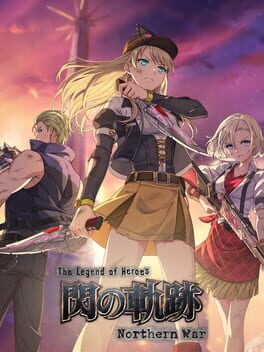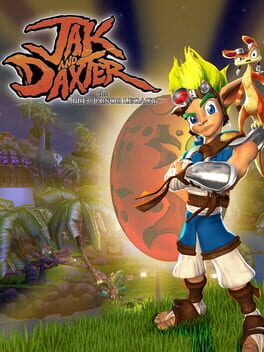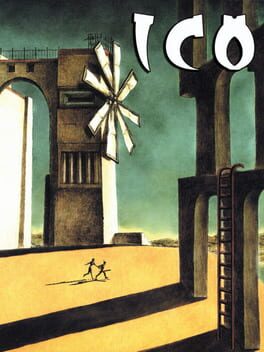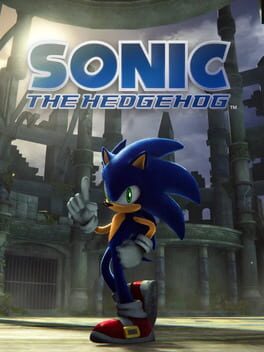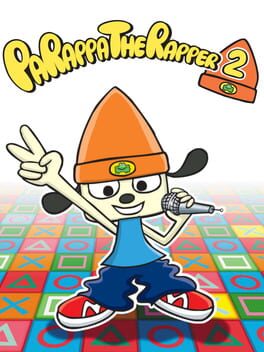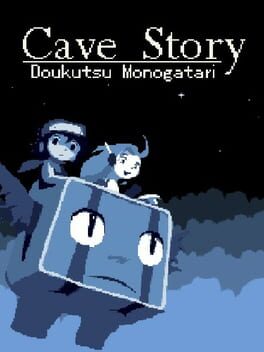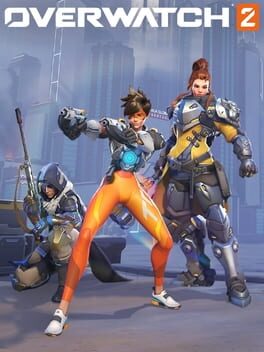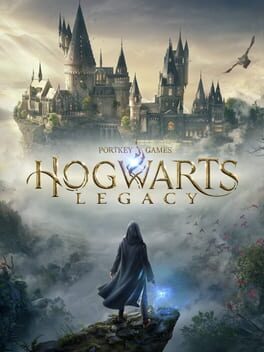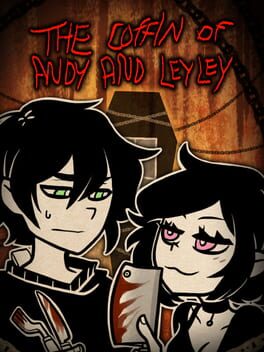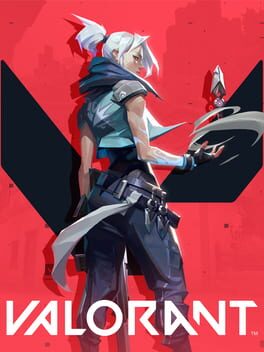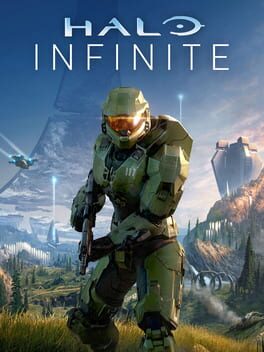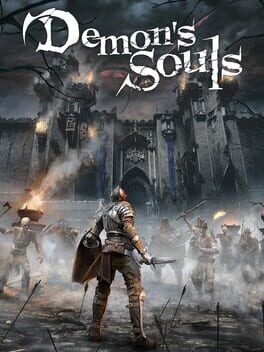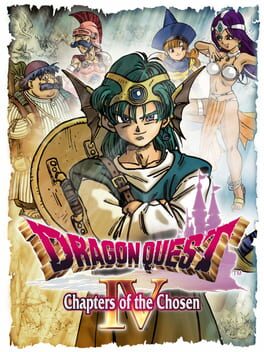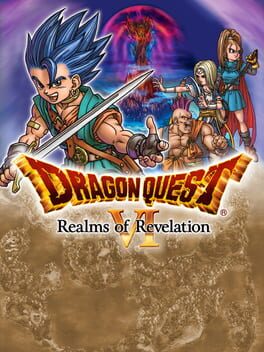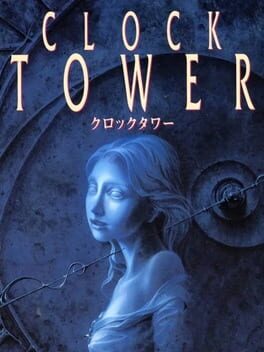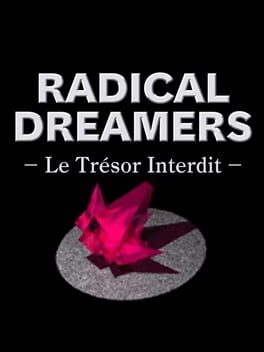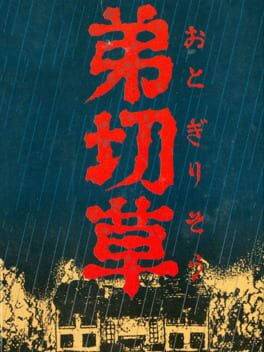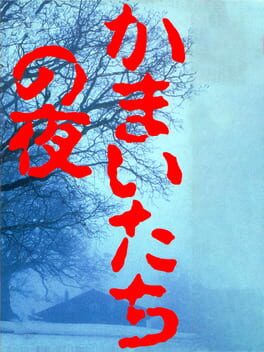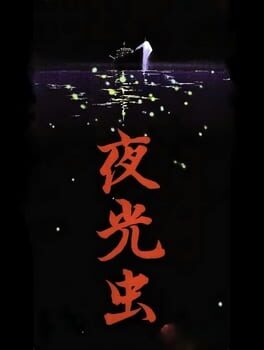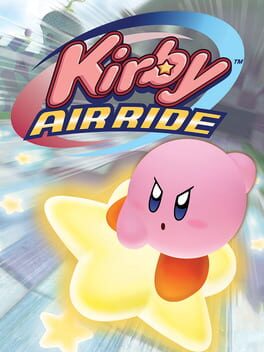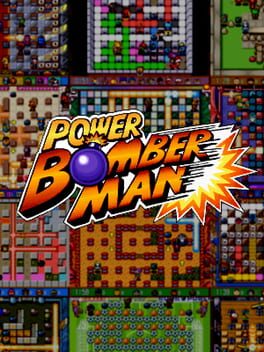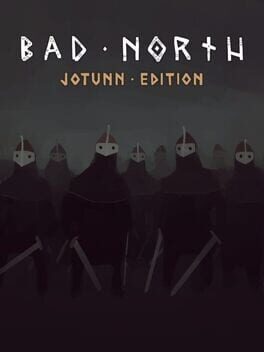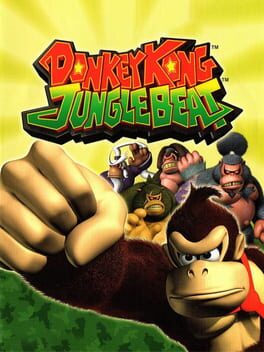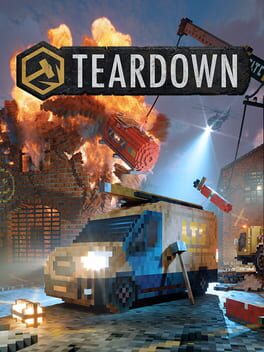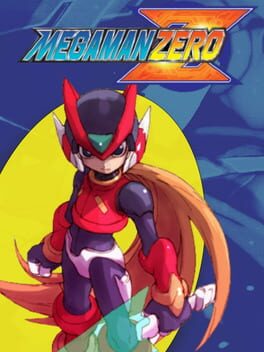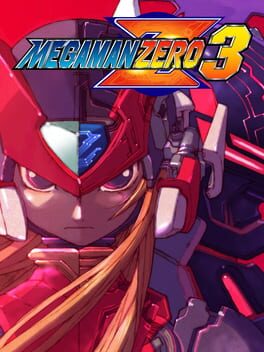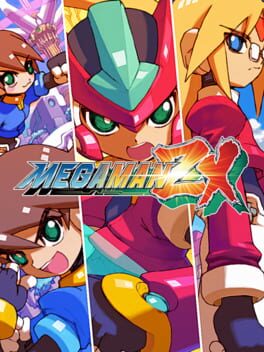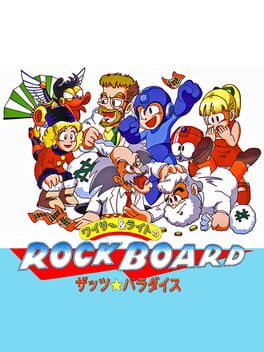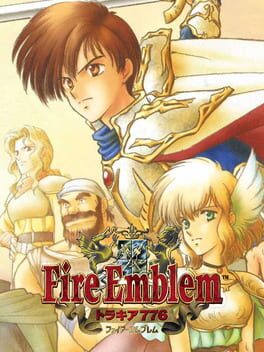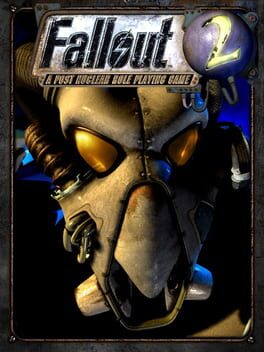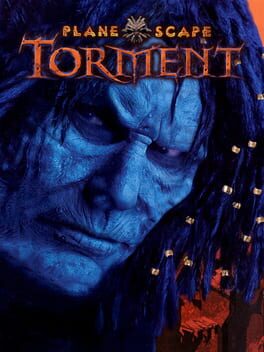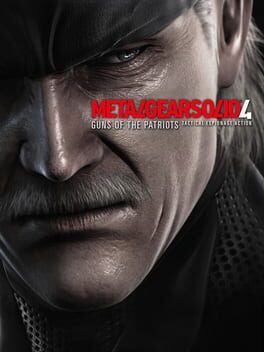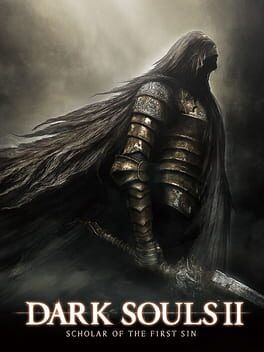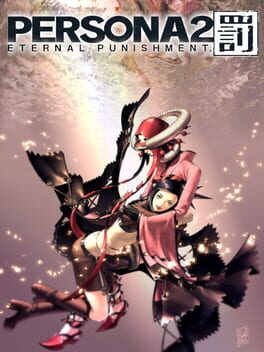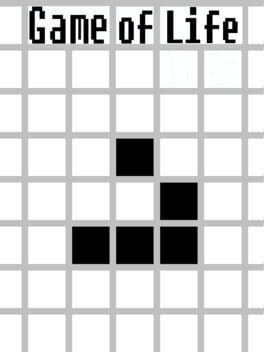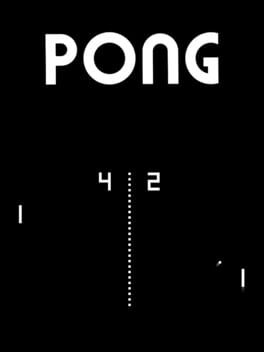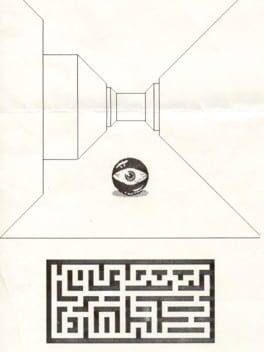CorpsSansOrganes
BACKER
553 reviews liked by CorpsSansOrganes
Sifu
2022
Gun Fight
1975
Half-Century Challenge Series: https://www.backloggd.com/u/C_F/list/half-century-challenge/
HCC #6 = Gun Fight (1975)
Welcome back to the Half-Century Challenge folks. Mega recently put out a banger review for the challenge so as usual, check it out too: https://www.backloggd.com/u/MegaTheRealOne/review/1619202/
Let's talk about violence in video games. Despite the cult classic status of games like Splatterhouse, it was not until the 90s with games like Mortal Kombat, Doom, and Night Trap that violence in video games became a mainstream and particularly controversial issue. In the early to mid 70s, one would be hard-pressed to display blood and gore in their software, let alone market it to millions of young gamers. However, to equate violence in video games to Mortal Kombat fatalities is rather reductive of a broad topic.
While studying Gun Fight (known in Japan as Western Gun, but that name kinda wouldn't cut it over here) I came across several videos on Youtube declaring it to be the first violent video game ever made. And... that's not true is it?
Gun Fight in and of itself was already based on one of Sega's Electro-mechanical video games. If one really wanted to stretch it, the player could get bitten by snakes off-screen in Oregon Trail. And that's not even getting into text adventures like Highnoon, which in all honesty is just Gun Fight without the purdy visuals. https://www.youtube.com/watch?v=QQ2gK5-VBMg
That's when it dawned on me. There was no universal idea of what constituted a video game back then, and even now it's still arguable. Should the electro-magnetic game this was adapted from be considered part of the same medium as Gun Fight? Should Highnoon be considered a video game, or merely a software translation of one of those choose your own adventure books? Even now people argue if all visual novels are video games, after all.
Regardless of all that, it's not a stretch to say Gun Fight was the first game with visceral death and murder on the glorious arcade screens of old. This is especially true of the North American release, which better emphasized the violent aspect of the game. That's right, the Japanese version was infamous enough to make the news with its concept alone, but it was quite different from the North American release: https://youtu.be/XbnYBB42J6c
I've often seen people associate western media with violent content more. There's obviously a case to be made when the ESRB is less strict about violence than the CERO (one need only point at how violence is censored in the Japanese releases of games like Resident Evil or Mortal Kombat to see the point) overall.
Western Gun's English localization, Gun Fight, illustrates this trend rather well. The sprites of the human characters are made larger and more distinctively human. Furthermore, the Japanese version allows both players to explore a fairly large map for its time and implement strategy to their movement. This is not really the case in the English version; the players basically move like Pong paddles with slightly more horizontal freedom. There are still objects to block bullets (the precursor for cover shooters of today in fact!) but by all means, the game's focus is now aggressive killing.
With hindsight being 20/20, it's interesting to see the seeds planted in the overall North American localization industry here. Only a few years after Gun Fight's release, companies would "de-anime" countless games. This is evident in perhaps thousands of games, but egregious examples would be as follows:
>The cover art for games like Pocky & Rocky 2 (Chibi artstyle in Japan, more reminiscent of western cartoons here)
>The Americanization of game titles (Mega Man becoming Rock Man, Akumajou Dracula becoming Castlevania, Ninja Ryukenden becoming Ninja Gaide- ok that one doesn't even make sense lol)
>The anime cutscenes being removed in games like Contra or Super Aleste (which itself was renamed to Space Megaforce)
>Licenses being stripped from works, such as Solbrain being transformed into Shatterhand
>Licenses being added to works, such as Puyo Puyo being reskinned into a Timon & Pumbaa spin-off game
>Characters like Ristar and Kirby becoming more badass than cutesy
etc
Japanese games being significantly retooled for western audiences? That's right folks, the process was solidified in 1975, fittingly with Western Gun.
Aside from that, it's also worth pointing out the Japanese version used Discrete Logic while the Midway localization was the first game ever to use a microprocessor. It was also one of Taito's most successful games ever, especially for the time it came out. 1975 was quite a dry spell for the industry. If it wasn't for Western Gun's release, I doubt that Space Invaders would have ever come into existence to change the landscape of gaming forever with its codifying of the early shmup genre or progressive difficulty in the medium.
In fact, when interviewed about the North American release of his game, Western Gun's creator Tomohiro Nishikado actually commented that while he found Gun Fight less fun than Western Gun, he was very impressed with the graphics in it. So much so that it actually led to him designing Space Invaders with a microprocessor in mind, as chronicled in "Power-Up: How Japanese Video Games Gave the World an Extra Life" by Chris Kohler.
I played Gun Fight with a friend. Which version I prefer is irrelevant and both are worth experiencing for all the historians in the audience. It's about 5 minutes to experience the totality of the game, and while it's not interesting to most people today, it's no doubt one of the most interesting development processes for a video game. As a developer myself who is interested in the history of media, I'm endlessly fascinated by what went into this both in the western and eastern releases.
“You can take the game out of the country, but you can’t take the country out of the game.”
-Arthur Bear, 2026
Next time: Colossal Cave Adventure (1976)
HCC #6 = Gun Fight (1975)
Welcome back to the Half-Century Challenge folks. Mega recently put out a banger review for the challenge so as usual, check it out too: https://www.backloggd.com/u/MegaTheRealOne/review/1619202/
Let's talk about violence in video games. Despite the cult classic status of games like Splatterhouse, it was not until the 90s with games like Mortal Kombat, Doom, and Night Trap that violence in video games became a mainstream and particularly controversial issue. In the early to mid 70s, one would be hard-pressed to display blood and gore in their software, let alone market it to millions of young gamers. However, to equate violence in video games to Mortal Kombat fatalities is rather reductive of a broad topic.
While studying Gun Fight (known in Japan as Western Gun, but that name kinda wouldn't cut it over here) I came across several videos on Youtube declaring it to be the first violent video game ever made. And... that's not true is it?
Gun Fight in and of itself was already based on one of Sega's Electro-mechanical video games. If one really wanted to stretch it, the player could get bitten by snakes off-screen in Oregon Trail. And that's not even getting into text adventures like Highnoon, which in all honesty is just Gun Fight without the purdy visuals. https://www.youtube.com/watch?v=QQ2gK5-VBMg
That's when it dawned on me. There was no universal idea of what constituted a video game back then, and even now it's still arguable. Should the electro-magnetic game this was adapted from be considered part of the same medium as Gun Fight? Should Highnoon be considered a video game, or merely a software translation of one of those choose your own adventure books? Even now people argue if all visual novels are video games, after all.
Regardless of all that, it's not a stretch to say Gun Fight was the first game with visceral death and murder on the glorious arcade screens of old. This is especially true of the North American release, which better emphasized the violent aspect of the game. That's right, the Japanese version was infamous enough to make the news with its concept alone, but it was quite different from the North American release: https://youtu.be/XbnYBB42J6c
I've often seen people associate western media with violent content more. There's obviously a case to be made when the ESRB is less strict about violence than the CERO (one need only point at how violence is censored in the Japanese releases of games like Resident Evil or Mortal Kombat to see the point) overall.
Western Gun's English localization, Gun Fight, illustrates this trend rather well. The sprites of the human characters are made larger and more distinctively human. Furthermore, the Japanese version allows both players to explore a fairly large map for its time and implement strategy to their movement. This is not really the case in the English version; the players basically move like Pong paddles with slightly more horizontal freedom. There are still objects to block bullets (the precursor for cover shooters of today in fact!) but by all means, the game's focus is now aggressive killing.
With hindsight being 20/20, it's interesting to see the seeds planted in the overall North American localization industry here. Only a few years after Gun Fight's release, companies would "de-anime" countless games. This is evident in perhaps thousands of games, but egregious examples would be as follows:
>The cover art for games like Pocky & Rocky 2 (Chibi artstyle in Japan, more reminiscent of western cartoons here)
>The Americanization of game titles (Mega Man becoming Rock Man, Akumajou Dracula becoming Castlevania, Ninja Ryukenden becoming Ninja Gaide- ok that one doesn't even make sense lol)
>The anime cutscenes being removed in games like Contra or Super Aleste (which itself was renamed to Space Megaforce)
>Licenses being stripped from works, such as Solbrain being transformed into Shatterhand
>Licenses being added to works, such as Puyo Puyo being reskinned into a Timon & Pumbaa spin-off game
>Characters like Ristar and Kirby becoming more badass than cutesy
etc
Japanese games being significantly retooled for western audiences? That's right folks, the process was solidified in 1975, fittingly with Western Gun.
Aside from that, it's also worth pointing out the Japanese version used Discrete Logic while the Midway localization was the first game ever to use a microprocessor. It was also one of Taito's most successful games ever, especially for the time it came out. 1975 was quite a dry spell for the industry. If it wasn't for Western Gun's release, I doubt that Space Invaders would have ever come into existence to change the landscape of gaming forever with its codifying of the early shmup genre or progressive difficulty in the medium.
In fact, when interviewed about the North American release of his game, Western Gun's creator Tomohiro Nishikado actually commented that while he found Gun Fight less fun than Western Gun, he was very impressed with the graphics in it. So much so that it actually led to him designing Space Invaders with a microprocessor in mind, as chronicled in "Power-Up: How Japanese Video Games Gave the World an Extra Life" by Chris Kohler.
I played Gun Fight with a friend. Which version I prefer is irrelevant and both are worth experiencing for all the historians in the audience. It's about 5 minutes to experience the totality of the game, and while it's not interesting to most people today, it's no doubt one of the most interesting development processes for a video game. As a developer myself who is interested in the history of media, I'm endlessly fascinated by what went into this both in the western and eastern releases.
“You can take the game out of the country, but you can’t take the country out of the game.”
-Arthur Bear, 2026
Next time: Colossal Cave Adventure (1976)
Ico
2012
cherishes human connection in an endearingly immature way. very quaint but also overbearingly self-conscious in its approach to standard conventions, sometimes to a fault? “design by subtraction” sounds genius on paper, though to me it can lend itself to one of two mentalities in execution. it pushes the player towards experimentation; resulting in immense satisfaction when success occurs due to intuitive forward-thinking, or the absence of any emotion at all in triumph as the logic of the solution may have never transpired within the player. thankfully i think ico manages to lean more towards the former overall with only a few moments that underwhelmed my train of thought. the inquisition of the existence of swinging on chains was that of satisfaction. i noticed when jumping on chains that they’d naturally swing back and forth a little, so i figured there was a way to voluntarily execute that on my own and voilà! the action button had answered my prayers. in opposition to this, much later into the game you’re required to blow up the base of a water tower to progress, as for some reason when its blown up part of the tower conveniently falls to form a bridge leading to the next part of the area. this seemed odd to me because there’s… no indication this would happen and i dont think the average person would assume it’d either. you just throw a bomb at the tower because in the scenario there’s no other options of what to do. this was a time where i was met with dissatisfaction in puzzle solving. even if it is kinda minor it still racked my brain a bit.
anyway i believe this “subtraction” psychology applies to more than just the diminishing of useless aspects that dont add to the artist’s vision. namely it contributes to the progression. frequently we’re paraded with the great expanse of the castle utilizing overhead views and wide shots. in continuing our journey we inherently subtract the unknown of that expanse, and perhaps any fears of it that had construed our view of it. i suppose any action in the (or any) game can be interpreted as a subtraction. subtracting enemies, problems, etc etc…
some further things i had noted…
i was heavily reminded of love-de-lic and cing’s work while invested, i think mainly because of the childlike innocence on display in both of our protagonists alongside the organic vibes of the atmosphere respectively. ico’s selflessness struck me in a similar way to moon’s main character and yorda that of another code’s ashley.
the deprivation of any music aside from minor points is an oddly fitting choice that i appreciate a lot. im a sucker for nature ambience and this is no exception. in a way it kept me grounded throughout the entire experience.
the first time i was met with the blissful save theme it had sounded awfully familiar, within seconds my mind uttered “Based God sampled this!” precisely in Flowers Rise on batshit insane mixtape GODS FATHER. i fucking love that tape man i’ll take any chance i can get to shill it.
this was a really resonant experience for me and i’m glad i finally got to this one. i definitely see where people like taro and miyazaki were influenced here. in the industry nowadays you can still feel tremors that this game insinuated way back when (for better or for worse). brilliant display of the importance of environmental attention to detail.
anyway i believe this “subtraction” psychology applies to more than just the diminishing of useless aspects that dont add to the artist’s vision. namely it contributes to the progression. frequently we’re paraded with the great expanse of the castle utilizing overhead views and wide shots. in continuing our journey we inherently subtract the unknown of that expanse, and perhaps any fears of it that had construed our view of it. i suppose any action in the (or any) game can be interpreted as a subtraction. subtracting enemies, problems, etc etc…
some further things i had noted…
i was heavily reminded of love-de-lic and cing’s work while invested, i think mainly because of the childlike innocence on display in both of our protagonists alongside the organic vibes of the atmosphere respectively. ico’s selflessness struck me in a similar way to moon’s main character and yorda that of another code’s ashley.
the deprivation of any music aside from minor points is an oddly fitting choice that i appreciate a lot. im a sucker for nature ambience and this is no exception. in a way it kept me grounded throughout the entire experience.
the first time i was met with the blissful save theme it had sounded awfully familiar, within seconds my mind uttered “Based God sampled this!” precisely in Flowers Rise on batshit insane mixtape GODS FATHER. i fucking love that tape man i’ll take any chance i can get to shill it.
this was a really resonant experience for me and i’m glad i finally got to this one. i definitely see where people like taro and miyazaki were influenced here. in the industry nowadays you can still feel tremors that this game insinuated way back when (for better or for worse). brilliant display of the importance of environmental attention to detail.
This review contains spoilers
i'm of two minds about Sekiro. at times it feels like a great game hiding inside a mediocre one, and sometimes it feels like a mediocre game hiding inside a great one. there are moments where it is a deeply electrifying experience, and there are times where it feels utterly indistinct from the stock AAA formula.
let's start with the good: the one-on-one swordplay in this game is a delight. on a very fundamental level, it's not too dissimilar from the Batman Arkham combat that took 2010s AAA game design by storm: you have dodges and parries that you use in response to specific diagetic and non-diagetic (glowing swords, markers over people's heads) tells, and maintaining a consistent rhythm of combat builds up a meter that you can use to defeat enemies in one hit. sekiro is much more difficult than it's contemporaries in this style in a way that may obscure this similarity, but it is very much there, and it works brilliantly. sekiro has some of the best one-on-one swordfights in the medium, battles of constant aggression where backing off for even a moment to heal gives your opponent time to recover their posture, where a single mistake on your part changes the game, and where perfection is tantalizingly within grasp once you adjust to the game's rhythms. designers Masaru Yamamura and Yuki Fukuda and their design team - along with the game's fantastic audio and animations - are to be applauded for making a game that is experientally not a thousand times removed from a Batman Arkham/Punch-Out!! hybrid feel utterly fresh and unique. the game's combat admittedly loses something when you aren't up against human opponents: the all-too-frequent times you are up against animals strip away the core loop of perfect parries and well-timed dodges into a much less elegant game of hammering the dodge button to get away from unparseable flails of limbs, but even then it rarely devolves so much that the core enjoyment of the combat is no longer present. it's only once you slink away from a duel, back into the shadows, that the flaws begin to show in the game's technique.
the stealth...exists. i hesitate to call it bad but it's certainly not remarkable: if you've played any AAA open world game made in the past few years you know what you're getting here: hiding in tall grass or on branches and rooftops from patrolling enemies that you can kill in one hit by sneaking up behind them, and some distraction items and moves that you'll rarely if ever use because it's much more effective to just stab them in the back. stealth rarely feels like it is the cornerstone of an engaging encounter - only the sniper miniboss in Ashina Depths really felt like something that I had to make careful and considered use of stealth in order to make it through, and that may just be because I got there far too early - and usually either falls into thinning out a couple of enemies before a fight, or slowly picking them off one-by-one Arkham style. the one interesting thing Sekiro brings to the table is that you can take off one of a bosses (usually two) health bars by getting the drop on them, but this has a knock-on effect for the design of those bosses where if you don't get a drop on them, you just have to fight them twice, with only major bosses having different moves and patterns for different phases. technically speaking this rewards the stealth but I'm very tired of the go-to reward for this kind of AAA game being the ability to skip repetitious content. ultimately, like a modern Assassin's Creed or Horizon: Zero Dawn the stealth here would be unable to carry a full game, and just barely meets the boundaries of acceptability for what increasingly seems like an element these games simply must have.
this feeling of weary obligation manifests narratively as well. thematically, I dig what it is doing. this story about how clinging to life after one's time has passed produces a sickness of the soul that mutilates the self and destroys the world around you to sustain yourself is often resonant and occasionally powerful, but it's the moment-to-moment writing that really lets it down: characters are routinely flat and one-dimensional (the character of Owl is notably ill-served, being absent for almost the entire game before making a bizarre cartoonish turn to evil), the game is too eager to show you it's mysteries to really make the environmental storytelling sing (the monastery is theoretically my favorite narrative arc here but because The Deal is unveiled almost immediately there's no real escalation of information: you learn almost immediately that these guys made themselves into undying monsters through these freaky worms and there's precious little left to discover in the course of your adventure), and the game's refreshingly restrained storytelling for a big AAA game ultimately dooms this narrative to fade from the mind as quickly as it passes through the body. perhaps this could have been solved with more dialogue, but given that attempting to explore the narrative further "rewards" the player with a "true" ending that is total MCU sequel hook rubbish compared to the poignant normal endings, I'm not sure this is a quick fix. I do think the storytelling here is ultimately too slight, as the lack of space given to characters like Genichiro or places like Ashina to be understood as characters who have a coherent belief system or culture or context they are clinging to robs the game of a lot of the resonance it could potentially bring out by boiling things down to the point that the metaphors struggle to be gleamed through the Proper Nouns, but I think the wider problem is this game is far, far too long.
again, this is something sekiro very much has in common with it's contemporaries in the AAA space. Sekiro took me just over 30 hours to finish - with at least 4 hours dedicated to Final Boss Attempts alone because Good God - and I think you could have halved that and it would have twice the impact. i'm not really interested in speculating on what a hypothetical half-long Sekiro would look like, or Sek if you will, but certainly the game as it is empties it's bag of shinobi tricks (generously) about two thirds before the end, and relies on quite a few palette swapped enemies and bosses (it is a crime that the Chained Ogre is in here at all, let alone twice) as well as some truly sloppy designs (Demon of Hatred, Headless Ape) that don't gel at all with the experience the game is aiming for. somewhere in the imagination there exists a 12-15 hour Sekiro that excises the bosses that Just Don't Work, and focuses on the supremely polished, rock-hard core of the game that is consistently electrifying, but instead we have this bloated, confused, game that gets messier the more you step away from that ironclad heart.
inevitably, I am brought back to the question that dominates all my thoughts about sekiro: why? why is Sekiro like this? why did it feel the need to be 30 hours long? most linear action games without Open Worlds tend to clock in at either half of or a third of that length, so why does this have the length of an RPG? speaking of RPGs, why are the countless vestigial elements of currency, upgrades, that do little to enhance the core design here as well? why is this game riddled with unnecessary elements that either do not help it or actively undermine it? i'd almost say that it feels trapped in the poisonous swamp of some other, predecessor franchise from which many of these vestigial design elements originate from, the fanbase of which would expect a game with certain features and considerations and of a certain length, a fandom that would give tremendous benefit to this game by only viewing it through the narrow lens of the other games in this series rather than the wider industry design trends that it is clearly in conversation with, and that Sekiro: Shadows Die Twice ultimately wounded itself in order to accommodate a formula set down by these prior games that the developers are tragically wedded to despite said formula not truly fitting with the core design of this fundamentally distinct experience...but I couldn't possibly think of what that might be. i'm pretty sure from software didn't develop The Surge, after all.
perhaps we should count our blessings: at least it didn't try to infect itself with an Open World.
let's start with the good: the one-on-one swordplay in this game is a delight. on a very fundamental level, it's not too dissimilar from the Batman Arkham combat that took 2010s AAA game design by storm: you have dodges and parries that you use in response to specific diagetic and non-diagetic (glowing swords, markers over people's heads) tells, and maintaining a consistent rhythm of combat builds up a meter that you can use to defeat enemies in one hit. sekiro is much more difficult than it's contemporaries in this style in a way that may obscure this similarity, but it is very much there, and it works brilliantly. sekiro has some of the best one-on-one swordfights in the medium, battles of constant aggression where backing off for even a moment to heal gives your opponent time to recover their posture, where a single mistake on your part changes the game, and where perfection is tantalizingly within grasp once you adjust to the game's rhythms. designers Masaru Yamamura and Yuki Fukuda and their design team - along with the game's fantastic audio and animations - are to be applauded for making a game that is experientally not a thousand times removed from a Batman Arkham/Punch-Out!! hybrid feel utterly fresh and unique. the game's combat admittedly loses something when you aren't up against human opponents: the all-too-frequent times you are up against animals strip away the core loop of perfect parries and well-timed dodges into a much less elegant game of hammering the dodge button to get away from unparseable flails of limbs, but even then it rarely devolves so much that the core enjoyment of the combat is no longer present. it's only once you slink away from a duel, back into the shadows, that the flaws begin to show in the game's technique.
the stealth...exists. i hesitate to call it bad but it's certainly not remarkable: if you've played any AAA open world game made in the past few years you know what you're getting here: hiding in tall grass or on branches and rooftops from patrolling enemies that you can kill in one hit by sneaking up behind them, and some distraction items and moves that you'll rarely if ever use because it's much more effective to just stab them in the back. stealth rarely feels like it is the cornerstone of an engaging encounter - only the sniper miniboss in Ashina Depths really felt like something that I had to make careful and considered use of stealth in order to make it through, and that may just be because I got there far too early - and usually either falls into thinning out a couple of enemies before a fight, or slowly picking them off one-by-one Arkham style. the one interesting thing Sekiro brings to the table is that you can take off one of a bosses (usually two) health bars by getting the drop on them, but this has a knock-on effect for the design of those bosses where if you don't get a drop on them, you just have to fight them twice, with only major bosses having different moves and patterns for different phases. technically speaking this rewards the stealth but I'm very tired of the go-to reward for this kind of AAA game being the ability to skip repetitious content. ultimately, like a modern Assassin's Creed or Horizon: Zero Dawn the stealth here would be unable to carry a full game, and just barely meets the boundaries of acceptability for what increasingly seems like an element these games simply must have.
this feeling of weary obligation manifests narratively as well. thematically, I dig what it is doing. this story about how clinging to life after one's time has passed produces a sickness of the soul that mutilates the self and destroys the world around you to sustain yourself is often resonant and occasionally powerful, but it's the moment-to-moment writing that really lets it down: characters are routinely flat and one-dimensional (the character of Owl is notably ill-served, being absent for almost the entire game before making a bizarre cartoonish turn to evil), the game is too eager to show you it's mysteries to really make the environmental storytelling sing (the monastery is theoretically my favorite narrative arc here but because The Deal is unveiled almost immediately there's no real escalation of information: you learn almost immediately that these guys made themselves into undying monsters through these freaky worms and there's precious little left to discover in the course of your adventure), and the game's refreshingly restrained storytelling for a big AAA game ultimately dooms this narrative to fade from the mind as quickly as it passes through the body. perhaps this could have been solved with more dialogue, but given that attempting to explore the narrative further "rewards" the player with a "true" ending that is total MCU sequel hook rubbish compared to the poignant normal endings, I'm not sure this is a quick fix. I do think the storytelling here is ultimately too slight, as the lack of space given to characters like Genichiro or places like Ashina to be understood as characters who have a coherent belief system or culture or context they are clinging to robs the game of a lot of the resonance it could potentially bring out by boiling things down to the point that the metaphors struggle to be gleamed through the Proper Nouns, but I think the wider problem is this game is far, far too long.
again, this is something sekiro very much has in common with it's contemporaries in the AAA space. Sekiro took me just over 30 hours to finish - with at least 4 hours dedicated to Final Boss Attempts alone because Good God - and I think you could have halved that and it would have twice the impact. i'm not really interested in speculating on what a hypothetical half-long Sekiro would look like, or Sek if you will, but certainly the game as it is empties it's bag of shinobi tricks (generously) about two thirds before the end, and relies on quite a few palette swapped enemies and bosses (it is a crime that the Chained Ogre is in here at all, let alone twice) as well as some truly sloppy designs (Demon of Hatred, Headless Ape) that don't gel at all with the experience the game is aiming for. somewhere in the imagination there exists a 12-15 hour Sekiro that excises the bosses that Just Don't Work, and focuses on the supremely polished, rock-hard core of the game that is consistently electrifying, but instead we have this bloated, confused, game that gets messier the more you step away from that ironclad heart.
inevitably, I am brought back to the question that dominates all my thoughts about sekiro: why? why is Sekiro like this? why did it feel the need to be 30 hours long? most linear action games without Open Worlds tend to clock in at either half of or a third of that length, so why does this have the length of an RPG? speaking of RPGs, why are the countless vestigial elements of currency, upgrades, that do little to enhance the core design here as well? why is this game riddled with unnecessary elements that either do not help it or actively undermine it? i'd almost say that it feels trapped in the poisonous swamp of some other, predecessor franchise from which many of these vestigial design elements originate from, the fanbase of which would expect a game with certain features and considerations and of a certain length, a fandom that would give tremendous benefit to this game by only viewing it through the narrow lens of the other games in this series rather than the wider industry design trends that it is clearly in conversation with, and that Sekiro: Shadows Die Twice ultimately wounded itself in order to accommodate a formula set down by these prior games that the developers are tragically wedded to despite said formula not truly fitting with the core design of this fundamentally distinct experience...but I couldn't possibly think of what that might be. i'm pretty sure from software didn't develop The Surge, after all.
perhaps we should count our blessings: at least it didn't try to infect itself with an Open World.
Sonic P-06
2019
PaRappa the Rapper 2
2001
Hey pretty good stuff actually! They actually made the timings fit for an LCD so I found it much more playable than the first game. The songs aren't as memorable as the studio's PS1 games but I quite like the Big song tbh.
It's too bad this game was a flop and this type of game fell out of style, but when it cost $90 adjusted for inflation I really can't blame people for the lukewarm response. Parappa 1 was considered innovative, but Parappa 2 competed with quite a lot of juggernauts like DDR so the hour long runtime didn't really impress audiences. Which is a shame, since I think it still holds its own rather well next to the titans.
Also the game has Lammy in it, so automatically a 10/10 game in spirit. I was surprised just how much she was featured since I remembered her only having a 5 second cameo in the anime!
Anyway who all eating the Parappa 2 pizza with me? https://i.imgur.com/lukW4xd.png
It's too bad this game was a flop and this type of game fell out of style, but when it cost $90 adjusted for inflation I really can't blame people for the lukewarm response. Parappa 1 was considered innovative, but Parappa 2 competed with quite a lot of juggernauts like DDR so the hour long runtime didn't really impress audiences. Which is a shame, since I think it still holds its own rather well next to the titans.
Also the game has Lammy in it, so automatically a 10/10 game in spirit. I was surprised just how much she was featured since I remembered her only having a 5 second cameo in the anime!
Anyway who all eating the Parappa 2 pizza with me? https://i.imgur.com/lukW4xd.png
Cave Story
2004
Cave Story is one of the all time indie classics. It has some of the most charming designs in a video game, with the paper white look of every character from the Mimigas to Quote and Curly being very iconic. The Amiga-like feel with the 50 FPS gameplay really gives it a vibe that's unlike other 21st century video games. Not to mention the music is some of the most elaborate I've heard from a composer wanting to emulate chiptunes https://youtu.be/IdAzVhCof_4
Yet every time I try to play Cave Story I simply have fun in the first few areas, reach the sand area, and just lose all my momentum. I forced myself to get the best ending today and I'm kind of at a loss. Keeping track of the weapon levels is annoying, finishing the sand zone is the longest hour of my life with the collectathon elements, there's a total lack of QOL due to the player being unable to do things like equip multiple items (ie jet + mask) at the same time, the weapon levels forcibly reset near the end, the true ending is some of the most cryptic and unintuitive nonsense in a video game....
I have endless respect for Cave Story. I love the graphics and music, I enjoy some parts like the early game and some bosses, and the Spur weapon and jet can make movement actually pretty fun near the end of the game. But having to keep in the back of my mind how easy it is to screw myself out of a proper ending, as well as constantly swapping weapons and even having to make sure not to level up the Nemesis... it all adds up to making me not actually enjoy playing the game overall.
It's a well made game, and I think there's a lot to like. I'm not a huge metroidvania player and I'm someone who primarily likes quick and kinetic sidescrollers I can speedrun endlessly, so I reckon bigger metroidvania fans have every reason to get more out of the game than I did. It's also not terribly long, being roughly 5 hours with a guide, so it's honestly worth a playthrough once for anyone who wants to see an influential indie work in action. It's super impressive work, but I just find myself enjoying the creator's other games much more.
I'm glad I went through it, and I'm glad I got to meet Balrog and Curly my beloved, but I'd definitely call it one of the better games I'm happy never to touch again personally.
Shoutout to the godlike Aeon Genesis translation btw, much prefer it to the official translation. Balrog's HUZZAH is the superior catchphrase, I'm sorry https://www.deviantart.com/extreme-sonic/art/Cave-Story-HUZZAH-374739229
Yet every time I try to play Cave Story I simply have fun in the first few areas, reach the sand area, and just lose all my momentum. I forced myself to get the best ending today and I'm kind of at a loss. Keeping track of the weapon levels is annoying, finishing the sand zone is the longest hour of my life with the collectathon elements, there's a total lack of QOL due to the player being unable to do things like equip multiple items (ie jet + mask) at the same time, the weapon levels forcibly reset near the end, the true ending is some of the most cryptic and unintuitive nonsense in a video game....
I have endless respect for Cave Story. I love the graphics and music, I enjoy some parts like the early game and some bosses, and the Spur weapon and jet can make movement actually pretty fun near the end of the game. But having to keep in the back of my mind how easy it is to screw myself out of a proper ending, as well as constantly swapping weapons and even having to make sure not to level up the Nemesis... it all adds up to making me not actually enjoy playing the game overall.
It's a well made game, and I think there's a lot to like. I'm not a huge metroidvania player and I'm someone who primarily likes quick and kinetic sidescrollers I can speedrun endlessly, so I reckon bigger metroidvania fans have every reason to get more out of the game than I did. It's also not terribly long, being roughly 5 hours with a guide, so it's honestly worth a playthrough once for anyone who wants to see an influential indie work in action. It's super impressive work, but I just find myself enjoying the creator's other games much more.
I'm glad I went through it, and I'm glad I got to meet Balrog and Curly my beloved, but I'd definitely call it one of the better games I'm happy never to touch again personally.
Shoutout to the godlike Aeon Genesis translation btw, much prefer it to the official translation. Balrog's HUZZAH is the superior catchphrase, I'm sorry https://www.deviantart.com/extreme-sonic/art/Cave-Story-HUZZAH-374739229
73 lists liked by CorpsSansOrganes
by hotpoppah |
17 Games
by fascinator |
21 Games
by C_F |
13 Games
by Bojangles4th |
16 Games
by C_F |
13 Games
by BigGnome |
25 Games
by senuzulmeyeter14 |
17 Games
by choppah |
9 Games
by Suall |
50 Games
by C_F |
11 Games
